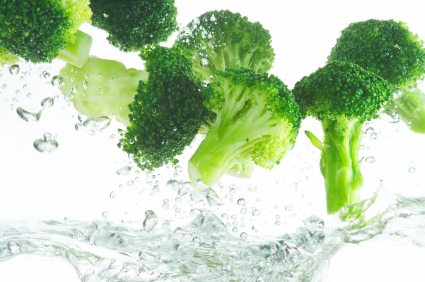There’s new hope on the cancer front. And you can find it in the produce aisle.
A study from Baylor College of Medicine reports that a compound in a certain vegetable kills leukemia cancer cells.1
Researchers used a concentrated form of it on human cancer cells. The compound caused the cells to die. But that’s not all… It killed the cancer cells while leaving the healthy ones untouched. Unlike chemo that destroys virtually everything in its path.
And this cancer-cell killing compound was more common than you’d believe.
It’s broccoli. Or rather a compound in broccoli, sulforaphane.
Leukemia is a type of cancer that affects white blood cells.2 It’s different from other cancers that start in organs such as the lungs or colon and then spread to the bone marrow. With leukemia, the process is reversed. The cancer starts in the bone marrow and then spreads to other parts of the body. Leukemia, especially acute forms, grows quickly. And if not treated right away, it can become fatal in a few months.3 So Baylor University’s findings offer much hope in treating blood cancers.
But sulforaphane’s cancer-killing properties aren’t just limited to ones of the blood…
Researchers at the University of Michigan tested it on both mice and cell cultures.4 They targeted cancer stem cells responsible for spreading the disease.
Sulforaphane slashed the amount of positive cancer stem cells by up to 80 percent. It also reduced tumor size by up to 75 percent. Plus, tumor growth was halted. Again, amazing results that chemotherapy just doesn’t produce.
But it gets even better.
Researchers from Oregon State University found that sulforaphane helps inhibit an enzyme—HDAC—that fuels the growth of prostate cancer cells.5 It also helps restore normal cell function.
“It is well documented that sulforaphane can target cancer cells through multiple chemo-preventive mechanisms,” said lead author Dr. Emily Ho.
It kills, prevents and repairs. Once again… Can’t say the same for chemo. Not by a long shot.
The studies used a high concentration of sulforaphane. More than you will find in a stalk of broccoli. But you can still benefit by eating, juicing, and blending with the green veggie. Other great sulforaphane sources are cabbage, cauliflower, Brussels sprouts, and other cruciferous vegetables. There are also a few companies that make broccoli extracts—you can find these online and at health stores.
According to a study in the Journal of Agricultural and Food Chemistry, cooking vegetables destroys sulforaphane content.6 So try to eat them raw or very lightly steamed to get the most out of them. And of course, buy organic.
Editor’s Note: According to one report, when a leading doctor at the Sloan‐Kettering Cancer Center found out that he had advanced‐stage cancer, he told his colleagues, “Do anything you want—but no chemotherapy!” Not surprising. Doctor’s know better than anyone how devastating chemo can be. So why aren’t more doctors using THIS alternative, Nobel Prize winner-studied, natural treatment instead? A study on people who received it for cancer and other ailments noted that “the results have been spectacular; the only side effect is ‘chronic good health.’”
Go HERE to find out all the details including how the mainstream almost killed one of the greatest cancer discoveries in history.
Like this Article? Forward this article here or Share on Facebook.
References:
1 http://plosone.org/article/info%3Adoi%2F10.1371%2Fjournal.pone.0051251
2 http://cancer.org/cancer/leukemia-acutelymphocyticallinadults/index
3 http://cancer.org/cancer/leukemia-acutelymphocyticallinadults/overviewguide/leukemia-all-overview-what-is-all
4 http://clincancerres.aacrjournals.org/content/16/9/2580
5 http://onlinelibrary.wiley.com/doi/10.1002/mnfr.201000547/abstract;jsessionid=794267A1F332ABF8D0A51DAF1BEB2556.d01t04
6 http://www.ncbi.nlm.nih.gov/pubmed/18950181

